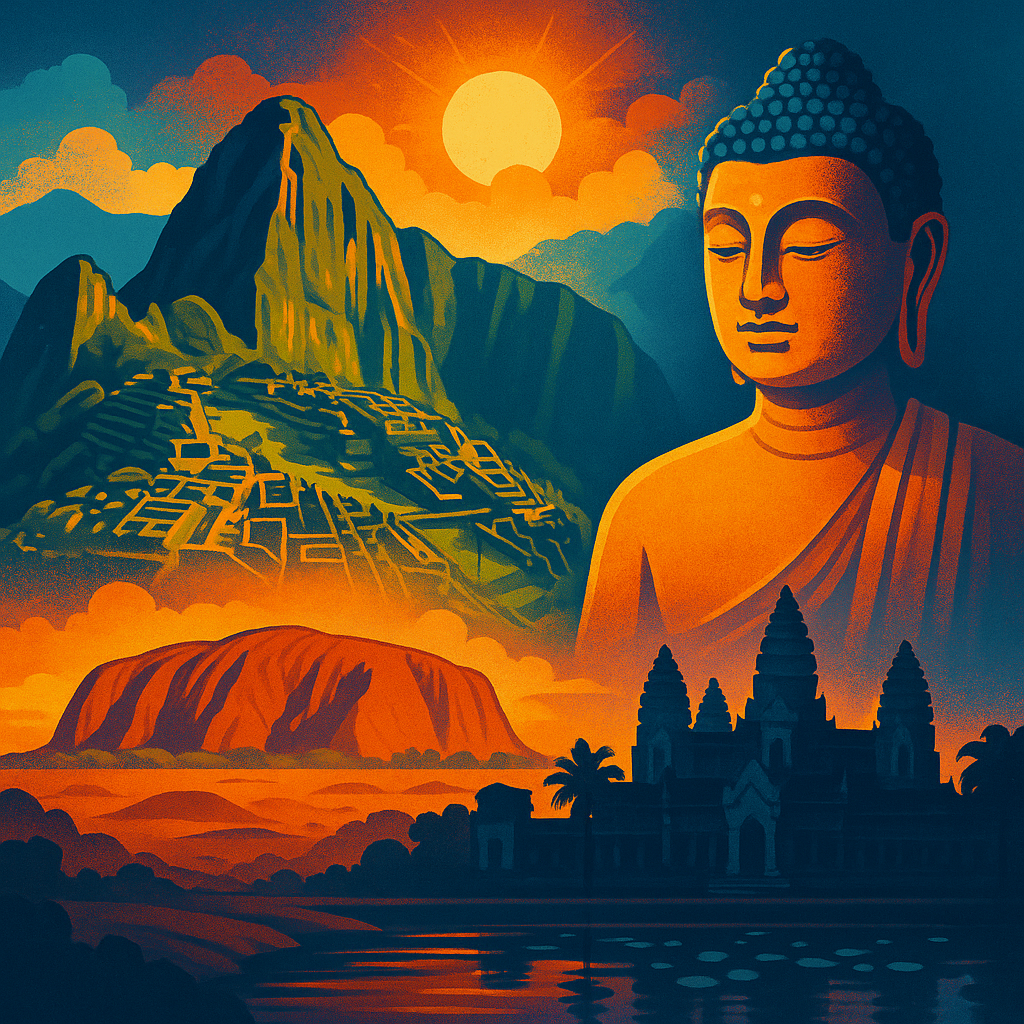
From the cloud-shrouded summits of the Andes to the jungle-concealed ruins of Southeast Asia, a tour of the Sacred Sites Circuit unveils not only the architectural brilliance of ancient cultures, but also their spiritual spirit. This special circuit ties together some of the world’s most breathtaking and enigmatic religious heritage attractions—Machu Picchu in Peru, Angkor Wat in Cambodia, and others in between. Whether you’re a cultural aficionado, spiritual traveler, or fearless explorer, this travel plan provides a rich experience immersed in history, legend, and grandeur.
MACHU PICCHU, PERU – The Cloud City Citadel of the Incas

Location: Andes Mountains, Peru
Significance: Incan sacred city; UNESCO World Heritage Site
Concealed deep in the Andes, Machu Picchu is not only an archaeological gem—it’s also a monument to Incan spirituality and nature worship. Nicknamed the “Lost City of the Incas,” this 15th-century wonder was a royal palace and religious complex sacred to Inti, the god of the sun. The accuracy of its stone construction, the positioning of temples to align with celestial phenomena, and the sweeping natural vistas leave visitors with an aura of mysticism that’s tangible.
Must-Do:
- Trek the Inca Trail for a spiritual experience along ancient trails.
- See the sunrise at the Sun Gate (Inti Punku).
- Meditate close to the Temple of the Sun, built to celebrate solstices.
ULURU-KATA TJUTA, AUSTRALIA – Heart of Aboriginal Dreamtime

Location: Northern Territory, Australia
Significance: Spiritual site of Anangu people; Aboriginal spiritual heritage
Uluru, or Ayers Rock, is more than a geological monolith—it’s a spiritual monument to the Dreamtime tales of Australia’s Aboriginal heritage. The surrounding Kata Tjuta rock formations are equally important, and collectively they constitute a sacred landscape representing ancestral figures and creation myths.
Must-Do:
- Tread the base of Uluru with an Aboriginal guide.
- Visit the “Field of Light” installation at dawn or dusk.
- Respectfully observe ancient rock art sites.
VARANASI, INDIA – The Eternal City along the Ganges

Location: Uttar Pradesh, India
Significance: One of the world’s oldest continuously inhabited cities; holy for Hindus, Buddhists, and Jains
On the banks of the sacred Ganges River, Varanasi is the quintessence of Hindu spirituality. Pilgrims throng to wash in the river’s cleansing waters and to conduct last rites for deceased family members. The city holds importance in Buddhist and Jain faiths as well, hence the confluence of religions and philosophies.
Must-Do:
- Witness the Ganga Aarti at Dashashwamedh Ghat.
- Visit Sarnath, where Buddha delivered his first sermon.
- Experience the morning boat ride to catch a glimpse of spiritual rituals.
BOROBUDUR, INDONESIA – The World’s Largest Buddhist Temple

Location: Central Java, Indonesia
Significance: Mahayana Buddhist temple; UNESCO World Heritage Site
Borobudur is a temple constructed in the 9th century in the form of a giant mandala, representing the journey to enlightenment. Ascending its levels is seen as a symbolic progression from the material world to Nirvana. Serene stone Buddhas gaze over green volcanic scenery, and delicately carved panels recount the life of Buddha.
Must-Do:
- Wake up at sunrise to watch it rise over the temple for a really magical experience.
- Visit nearby temples such as Prambanan for a greater cultural perspective.
- Discover the alignment of the temple with cardinal directions and Buddhist cosmology.
ANGOR WAT, CAMBODIA – The Temple City of the Khmer Empire

Location: Siem Reap, Cambodia
Significance: World’s largest religious monument; Hindu-Buddhist syncretism
Originally constructed in the 12th century as a Hindu temple honoring Vishnu, Angkor Wat was eventually transformed into a Buddhist religious complex. Its greatness is expressed in its size, balance, and intricately carved bas-reliefs telling cosmic wars and heavenly myths. Strolling through its courtyards and corridors, visitors find themselves immersed in the sacred geometry that once ruled an empire.
Must-Do:
- View the temple at sunrise when its silhouette is mirrored on the lotus pond.
- Explore Ta Prohm, where nature takes back the stone.
- Discover the evolution from Hinduism to Buddhism in the temple complex.
WHY TAKE THE SACRED SITES CIRCUIT?
- Spiritual Awakening: These places remind you of ancient wisdom and rituals beyond religion and geography.
- Cultural Awareness: Get a better sense of the civilizations that created these monuments—and how their beliefs created our world.
- Natural Beauty: These locations are frequently situated amidst astounding natural scenery, further underlining the link between spirituality and nature.
- Personal Growth: All locations challenge you physically, emotionally, or mentally, so it’s a life-changing experience.
SACRED TRAVEL TIPS
- Respect Local Customs: Dress conservatively, take off your shoes when necessary, and be respectful in your actions.
- Employ Local Guides: They provide insightful information on the spiritual and historical importance of each location.
- Travel Mindfully: These are living places of reverence for others; journey with purpose and humility.
FINAL REMARKS
The Sacred Sites Circuit is more than a travel plan—it’s a pilgrimage through time and place, spirit and rock. From the sun-lined citadel of Machu Picchu to the celestial geometry of Angkor Wat, each step is an opportunity to find connection with something beyond yourself.
Begin this journey not only to see the remnants of history, but to develop a greater sense of awareness about the world and your own place in it.

